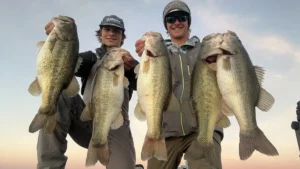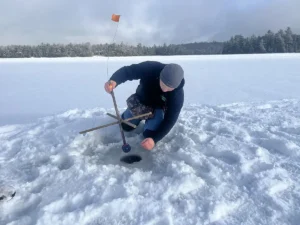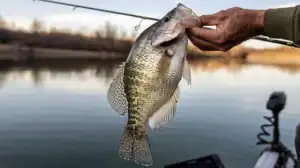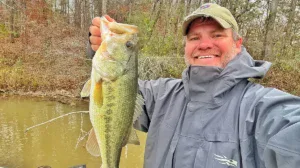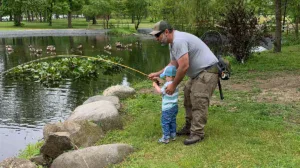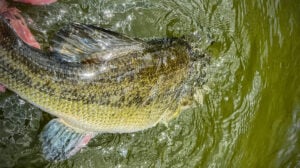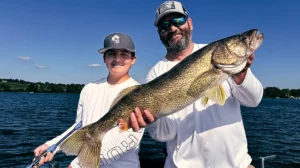I recently embarked on a two-week RV trip in Alaska with my family. It had been a dream of my parents to make the trip, and it was a truly unforgettable experience. I highly recommend the trip to those who value their time outside, words cannot truly describe the sheer beauty of the land and how amazing the people are. As an angler, this was a dream come true and a great opportunity to test my skills with my twin brother and best friend, Seth, who is also an avid fisherman on the adventure of trout fishing Alaska.
The trip began with a flight into Anchorage and then from there, we were able to cruise our way through the Kenai Peninsula. Our travels took us as far North as Denali National Park and as far South as the coastal town of Homer.
Admittedly, the late September into early October timeframe is not “prime time” as far as fishing is concerned. In Alaska, this is known as the shoulder season. The large runs of salmon are largely over and while there was some still around, the fishing is tough and seasons are closing fast. If you find yourself on the Kenai Peninsula during this time period, however, do not leave the travel fishing rods at home.
The rivers and streams of the area overflow with wild rainbow trout and dolly varden. These fish can grow to quality size and the large populations are fueled by the influx of eggs and nutrients washed down during the various runs of spawning salmon. The fish face limited pressure and can be effectively targeted without a boat making this a great time for the do-it-yourselfer.
Below, I have compiled all the information you need to take advantage of some really special fishing.
Extra tip: the dolly varden is a char variety found in coldwater tributaries in North America and the Pacific Ocean in Asia. They can be pursued using the same tactics and found in the same locations as rainbow trout.
FLYING WITH FISHING GEAR
This was my first time flying with my fishing gear and candidly, I was a bit nervous about the procedure. This resource, directly from TSA, was a major help and made the process simple.
While four-piece, travel-style rods in short tubes count as carry-on luggage, I opted to acquire a rod tube for the trip as I planned on bringing longer one-piece rods. A great option is the Flambeau Bazuka Pro Rod Tube. It telescopes out from 73 inches to 102 inches and it easily handles multiple rods and those with larger guides. It is exceptionally rugged, there is no need to worry about it bending or getting crushed with luggage. Additionally, it is padded at both ends and meets all TSA requirements. A good tip for added peace of mind is to purchase a combination lock to insert into the telescope lock.
A lot of clothing and other miscellaneous supplies are needed for an extensive Alaska expedition and packing space will likely be at a premium. Opting to simply pack the essentials and pick up the remaining supplies upon arrival is encouraged. There is a seemingly never-ending selection of small bait shops that are eager to provide up-to-date fishing reports and a good dose of local insight.
MY ESSENTIAL GEAR RECOMMENDATIONS FOR ALASKA
- Pliers: Berkley 6in XCD Straight Nose Pliers
- Braid Scissors: Bass Pro Shops XPS Braided Line Scissors
- Fluorocarbon Leader: 6 to 12-pound Seaguar Blue Label
- Tackle Bag: Plano Weekend Series 3500 Tackle Bag
- Polarized Sunglasses: Native Wells XL
Rods and Reels
I suggest packing two distinct tackle systems when visiting Alaska during the shoulder season. One ultralight setup for pushing up small overgrown streams and a longer, heavier tackle system for larger rivers with more room to fish.
Ultralight Combo
When choosing an ultralight, be sure to keep in mind that this setup is likely going to be dragged through deep swamps and never-ending brush snags. This creates possibilities for a guide getting chipped or a tip snapping. A rod with a super-fast action and a reel with a decently smooth drag system is really all that is needed.
Extra Tip: An Ugly Stik Elite Spinning rod paired with a 20-size Pflueger President Spinning Reel is a fine option
Heavier Combo
From my experience, the larger river systems tended to hold bigger fish. However, they were often fast moving which made fighting and landing fish very tricky. Longer rods, over 8 feet, are encouraged as they make peeling fish out of the heavy current easier. Additionally, reels in the 3000 size class should be considered as they can hold the line needed for long casts and sustained runs when fighting powerful specimens.
Fishing Line
With a limited selection of setups, spooling up with fairly universal line sizes will keep you more efficient. Braid should be utilized as sharp timber snags and jagged rocky bottoms fill the area. With the lack of pressure, the fish are not especially line-shy even in the extremely clear water, a 4 – to 6-foot quality fluorocarbon leader is all that is needed to maximize bites.
Extra Tip: Both 5 and 8-pound braid allow an angler to utilize the most common trout tactics.
Lures
Thanks to the helpful tips of locals, we were able to purchase a few baits that produced in just about every situation we encountered. Like in most trout fishing applications, vibration and flash produce in most presentations. Bright and aggressive color patterns in clear water attract aggressive fish from long distances and help an angler quickly discover the most productive areas.
Recommended Alaska trout lures would include the following:
Inline Spinner: Mepps Black Fury Plain
Inline Spinner: Mepps Aglia Original Plain Spinner
Casting Spoon: Bass Pro Shops XPS Canadian Spoon (wonder bread was a top color)
Casting Spoon: Acme Kastmaster Spoon
Also, see our article on the best trout lures.
Extra Tip: A longer tag end on your line helps to keep floating debris off an egg.
Egg Rig
As previously mentioned, the resident fish are very focused on eating salmon eggs, which accounts for the bulk of their forage during certain times of the year. The rig is simple, a small float, two light split shots, an egg-style hook, and a single salmon egg round out the operation. A key to this finesse changeup is to set the float at a depth that drifts the bait right along the bottom where eggs would naturally be found. Be prepared to lose a lot of tackle in the process, if you are not getting snagged, the egg is likely too high in the water column. See also my other article for more trout fishing rigs.
Extra Tip: A No. 4, 038 Salmon Egg Baitholder Hook from Eagle Claw works great
TROUT FISHING IN ALASKA
With limited time, covering water was the name of the game. Shallow, turbulent areas were not given much attention as we pursued holes, eddies and deep banks. Likely areas were initially broken down with spoons or spinners and then worked back over by drifting a salmon egg under a float.
Polarized sunglasses came in handy for actively spotting fish. Looking for fish higher in the water column tended to yield the most aggressive trout. Evening and early morning hours were predictably more productive, but mid-day periods seemed to produce bigger bites if we were able to get them.
WHERE TO FISH IN ALASKA
The Kenai Peninsula, well known to offer great fishing opportunities, features multiple glacier-fed rivers and streams. It would take a lifetime to fish through all of them and most tend to be productive for anglers. Which is a large reason we focused on this area for our first trip. Many of the streams and rivers lack accurate mapping which adds to the excitement of exploring new areas. While we were fortunate enough to catch fish wherever we went, three areas in particular were the most productive and easiest to fish. Be sure to check local and state regulations, as some waters fall under the “fly-fishing-only” category.
Extra Tip: It can be tricky to tell the difference between Rainbow Trout and Dolly Varden. The key is to inspect the color of the spots, lighter spots are a telltale sign of a Dolly Varden, and darker spots likely indicate a Rainbow Trout. See also our trout species identification guide.
Kenai River: Section directly below Kenai Lake into the town of Cooper Landing
Famed for large runs of sockeye, silver and king salmon, the Kenai is also a top spot for dolly varden and large rainbow trout. Access points maintained to accommodate the many anglers who fish during the peak of the Salmon run highlight this section.
For lodging and fishing information contact: Gwin’s Lodge and Roadhouse.
Quartz Creek: Section along the Sterling Highway
Closed to all salmon fishing, Quartz Creek garners little attention from anglers. However, the unpressured salmon provide the surplus of eggs necessary to grow dolly varden and rainbow trout to trophy-size classes. The rugged brush and overgrown banks make fishing a challenge, but with an adventurous spirit, anglers can take part in a secluded fishing experience.
Spend a few days at Quartz Creek Campground in the Chugach National Forest for more private action.
Susitna River: Area around the town of Talkeetna
The various glacier runoff-fed tributaries of the Susitna River offer prime habitat to rainbows, dolly’s , and Pacific steelhead. While many tend to be shallow and featureless, the confluence point of the locally named Wiggle Creek, Talkeetna and Susitna Rivers has multiple deep pools and back eddies that are loaded with fish.
To properly explore this area, consider utilizing the Talkeetna RV and Boat Launch.
PARTING THOUGHTS ON TROUT FISHING ALASKA TRIPS
As anglers, we are incredibly lucky that our passion takes us to beautiful places. I am often guilty of being so focused on the task at hand, that I forget to look around and appreciate the setting in which I am found. Alaska helped me realize that catching fish only accounts for part of the joy in this special sport.
A little map study, information lookup, local recommendations and an adventurous and explorative spirit will lead you to a once in a lifetime trout fishing experience on the banks of an Alaskan river.
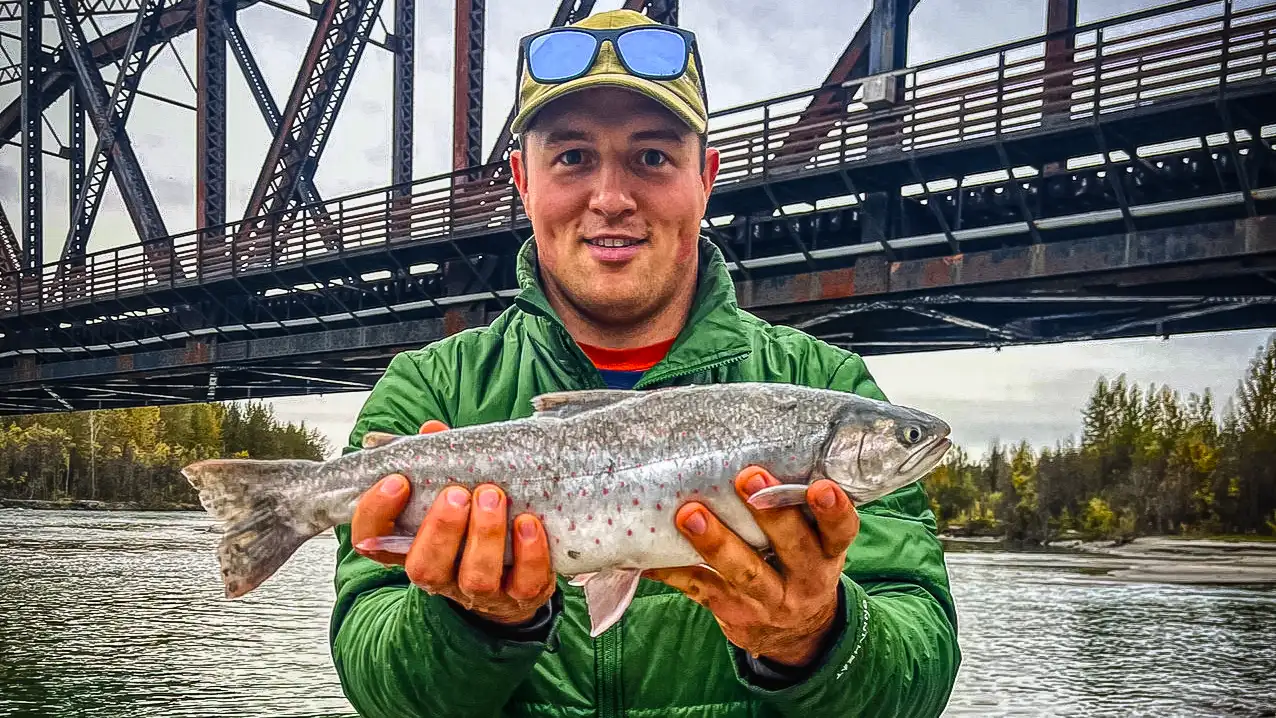
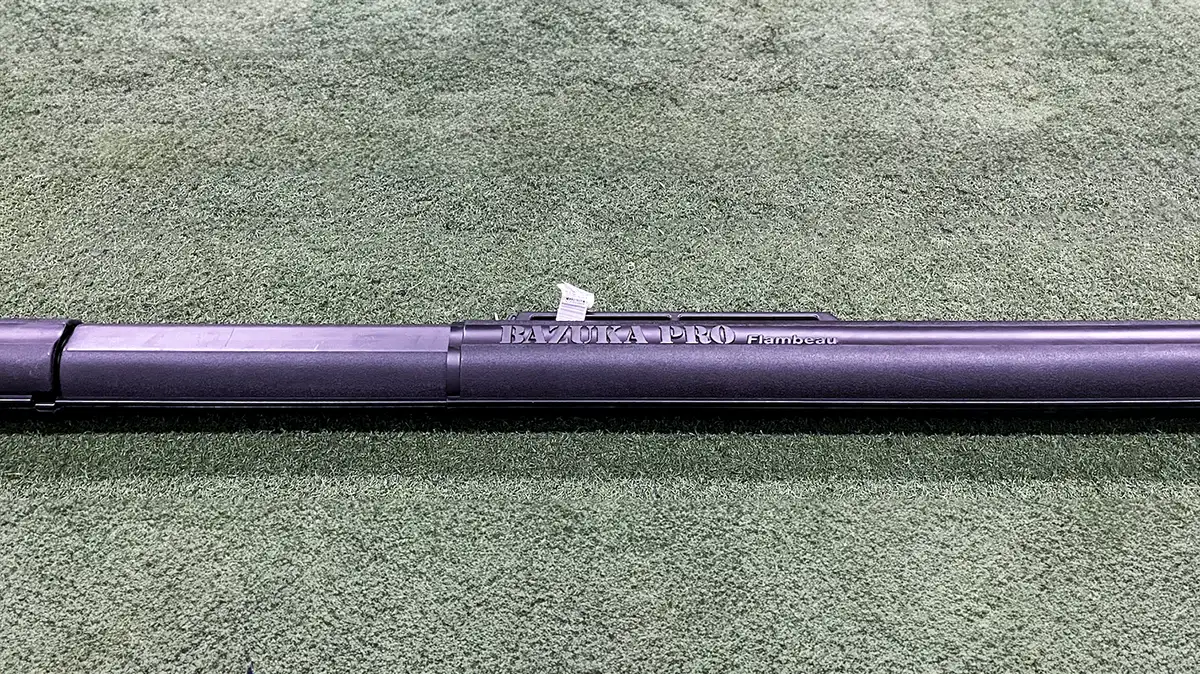
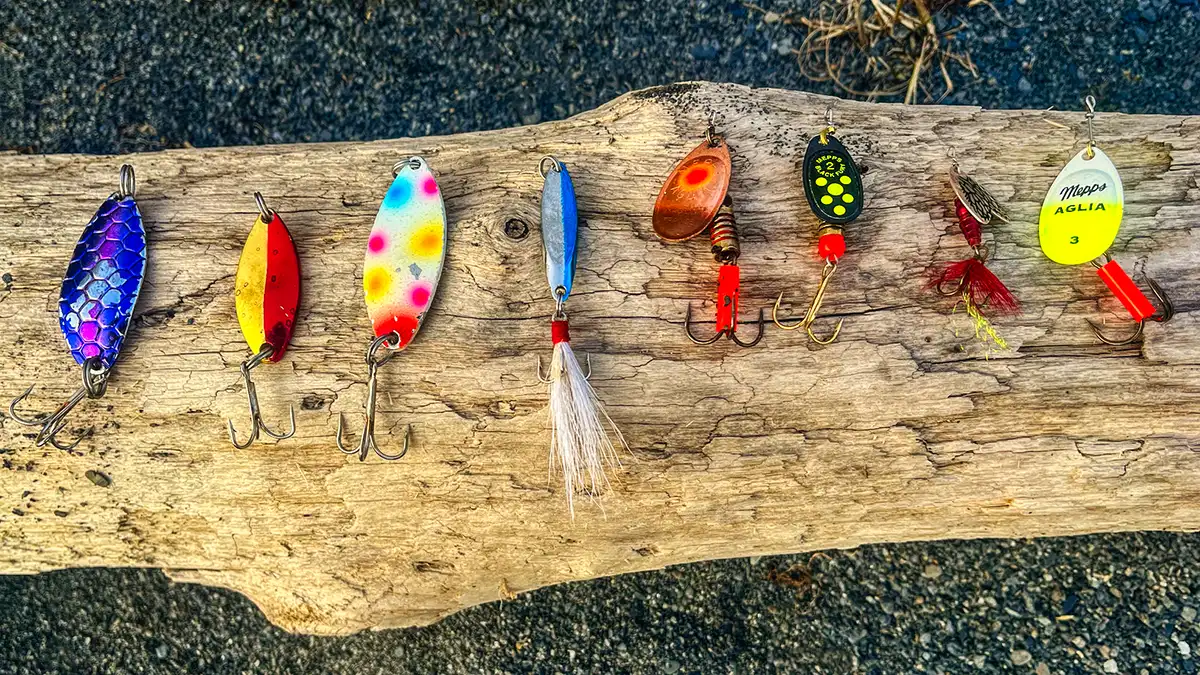
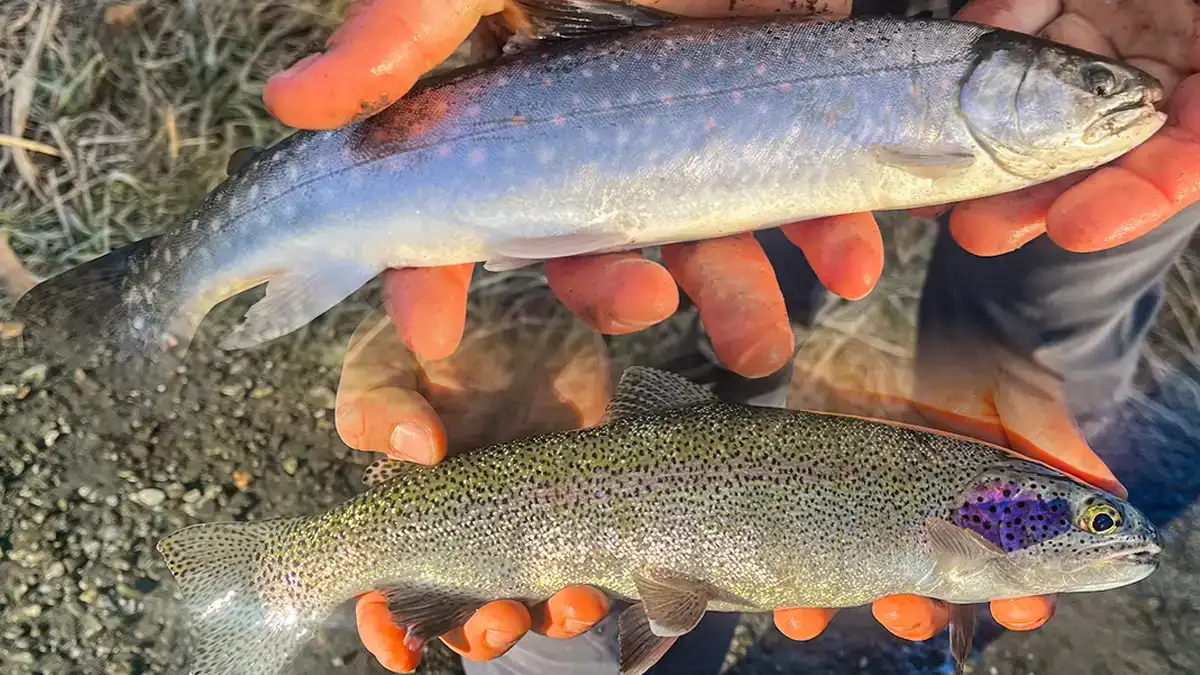
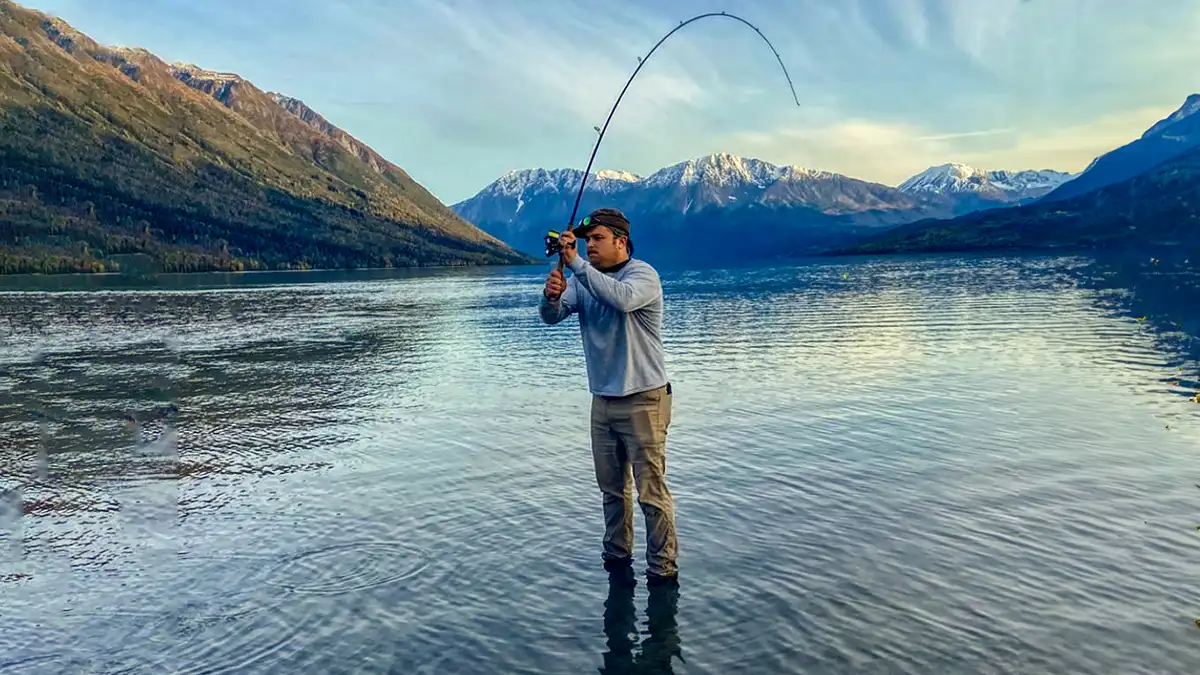
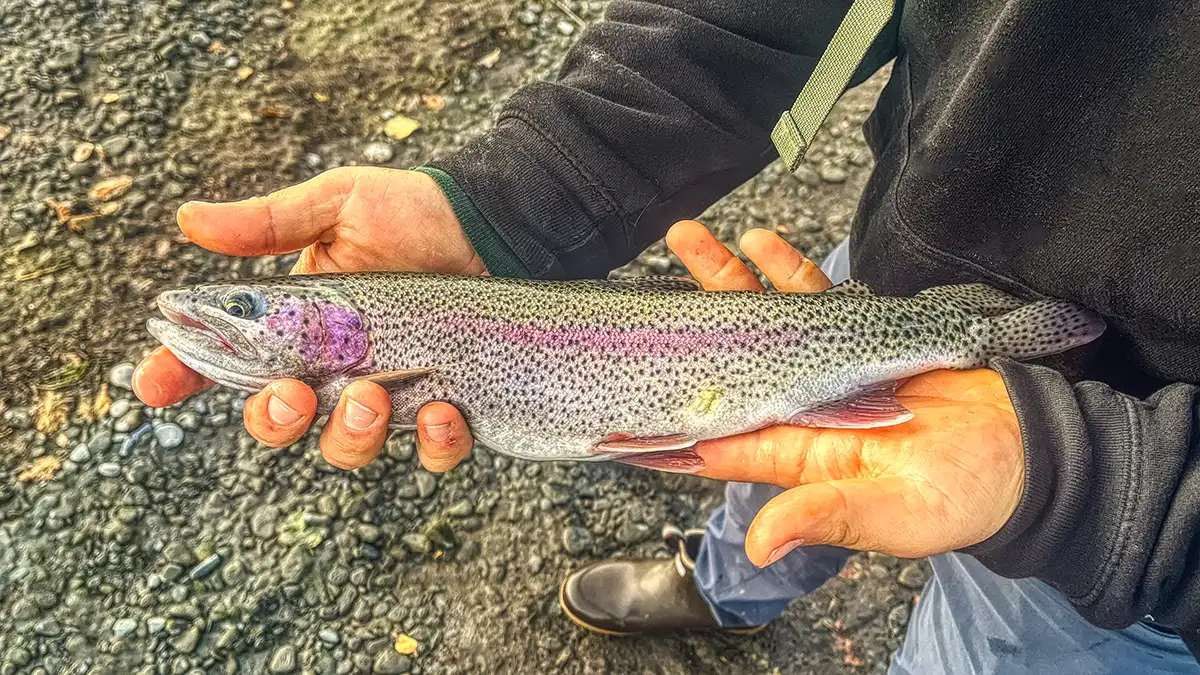
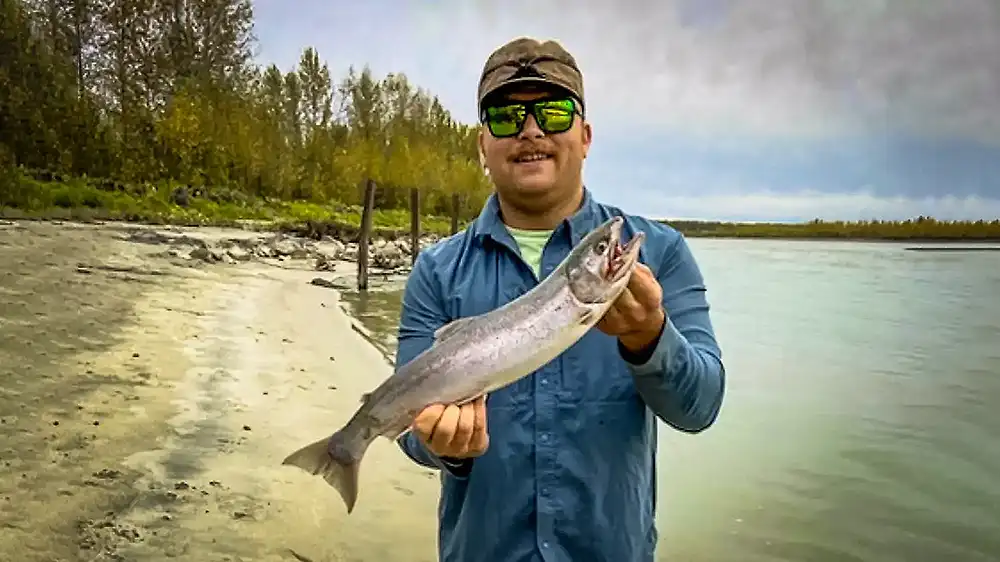

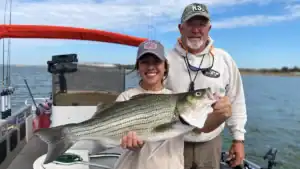
![[VIDEO] Swindle’s Fall Bass Bait Rotation for Shad Fisheries](https://www.wired2fish.com/wp-content/uploads/2024/11/fall-bait-rotation-300x169.webp)
